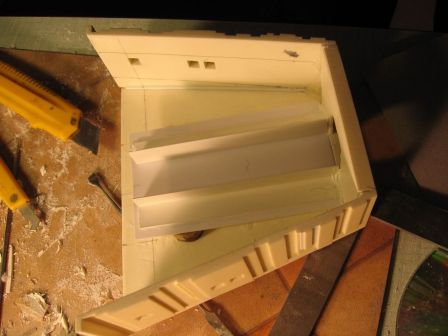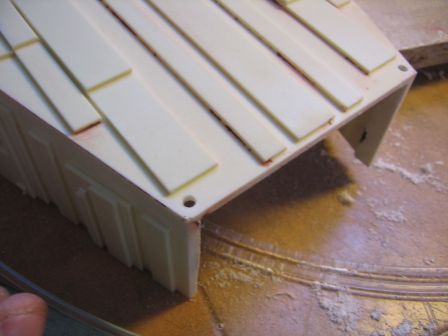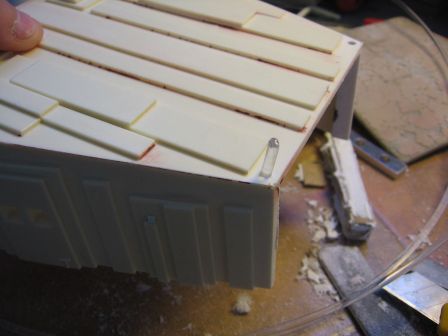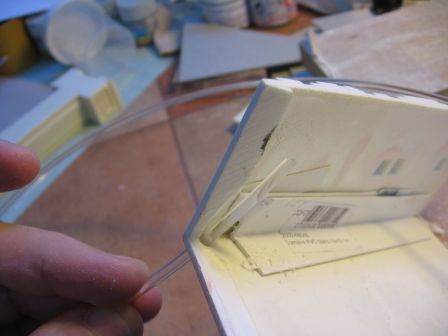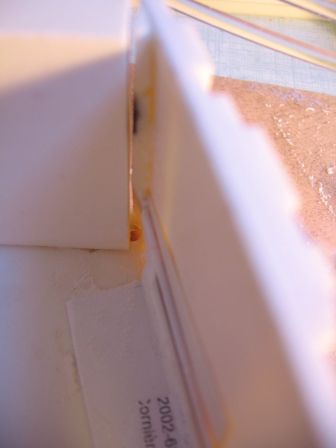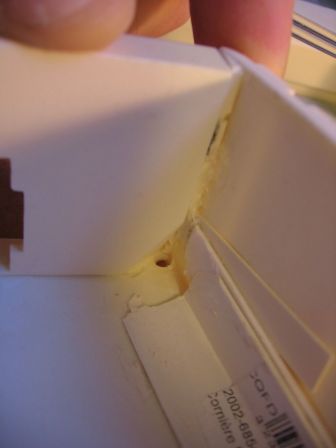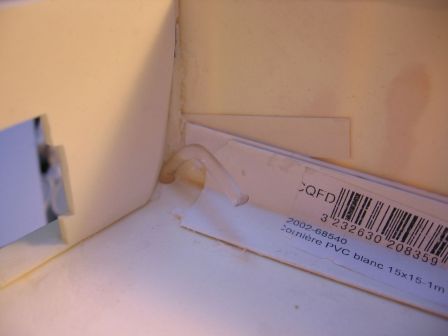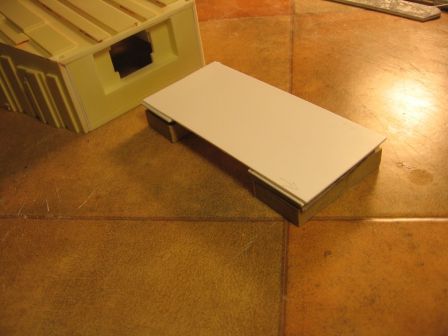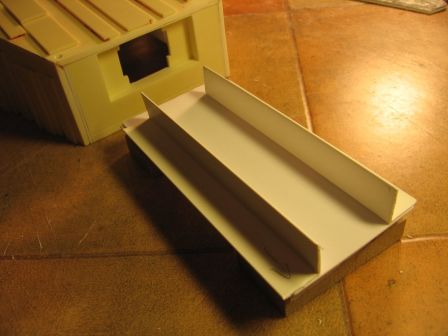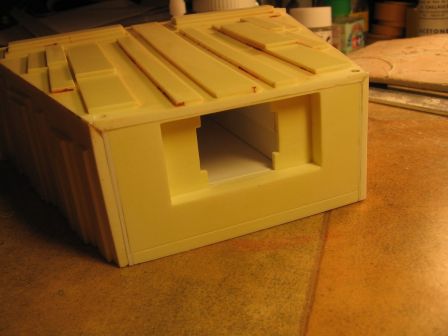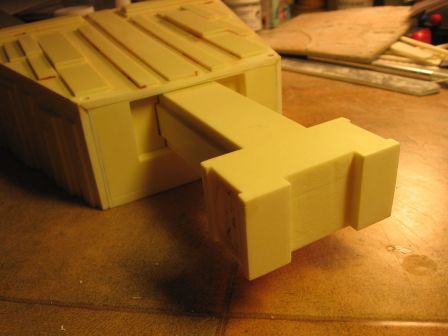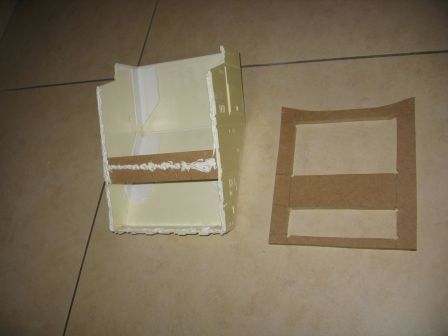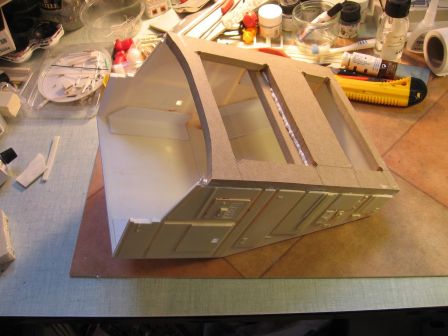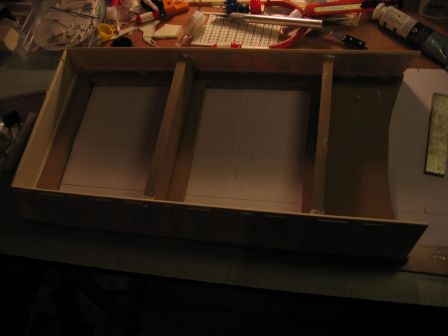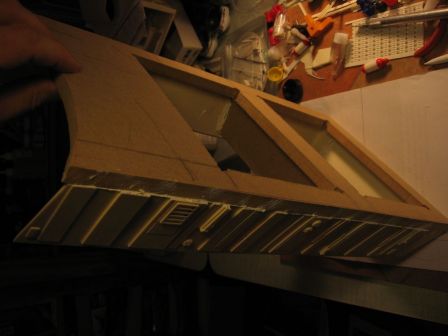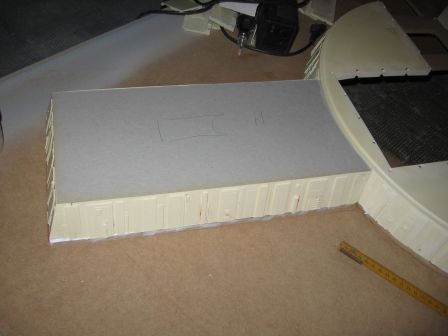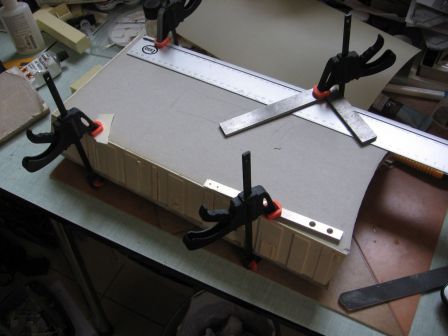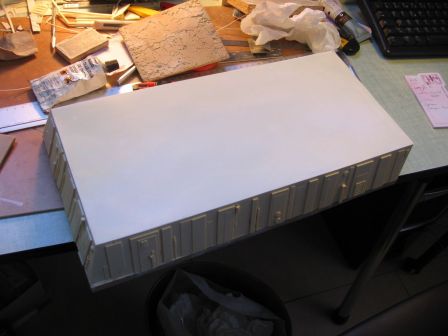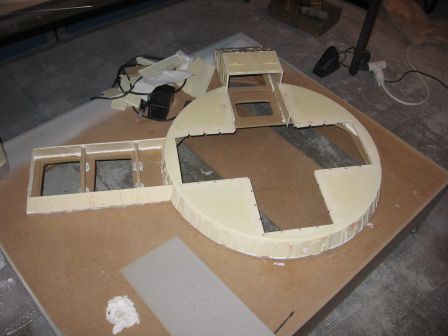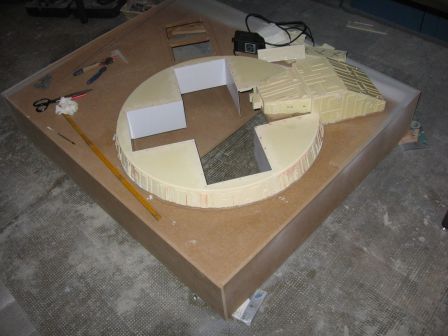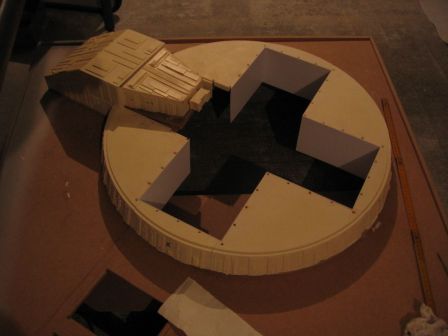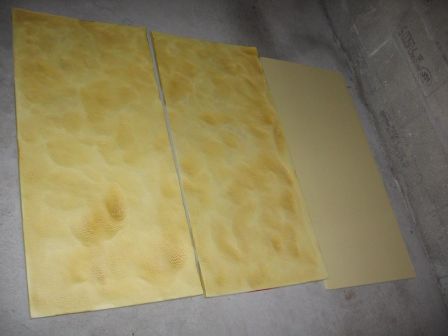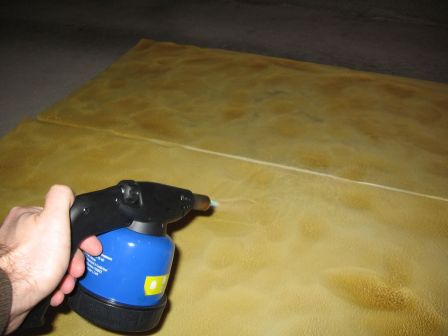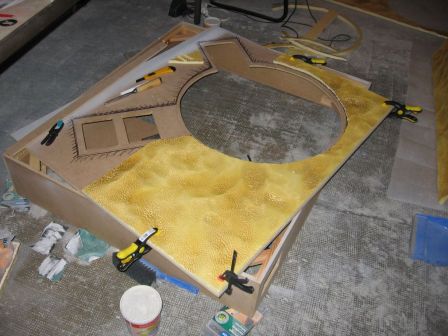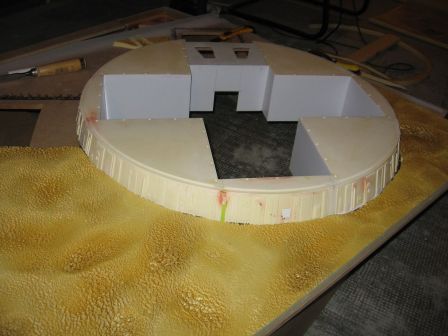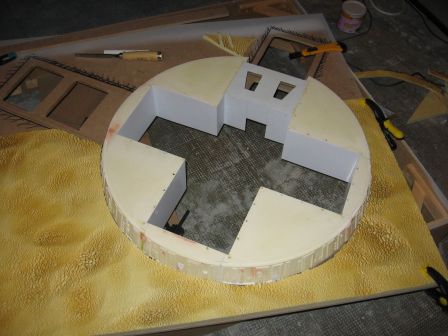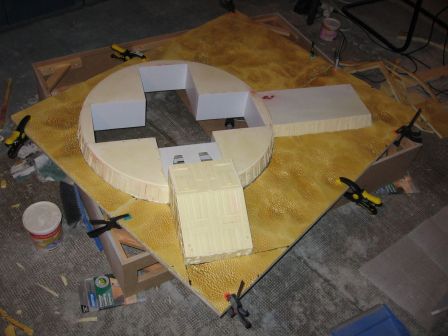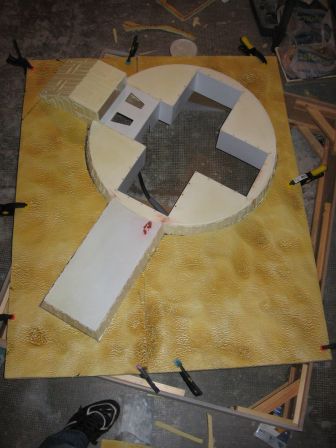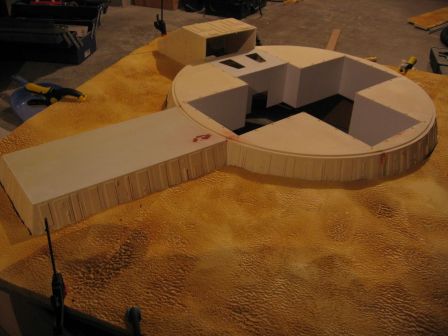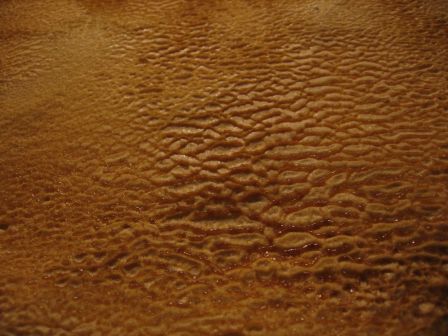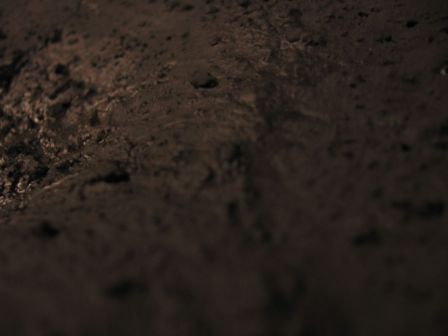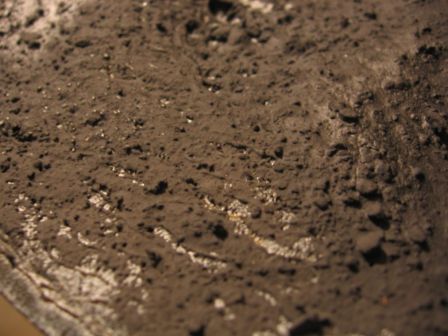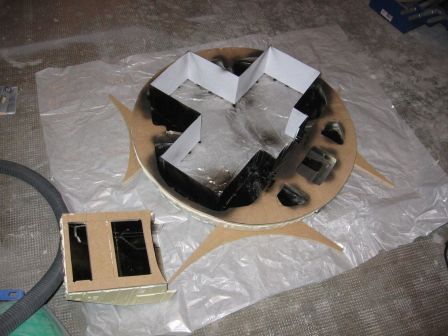Launchpad - Moon surface and access corridor
Par olcabour le jeudi, 1 mars 2012, 21:40 - Launchpad - Lien permanent
The upper slide was saved and reused on new wooden blocks.
This story also helps me deal with something I had forgotten: the two signal light at the upper corners of the roof. The roof is drilled to allow 3mm optical fiber to come through. The wall part is rather thick and must be heavily sand in the corners (inner side). The optical fiber is softened with a lighter to make an elbow.
The bottom slide is quickly performed on the same principle as the top one.
The main building is glued to a wooden base, bringing it at the same level as the central disk.
The service platform is also mounted on a rectangular wooden base. Wood blocks will also provide good support on the sides.
The floor is made of thick cardboard (3mm)
then covered with plastic card 0.5mm
Here are some test shots pictures during the different steps presented in this post. It's starting to look interesting 
Next step : the lunar surface. It is made from foam plates worked with a blowtorch (the room must by aired frequently. I avoided ventilation during the operation as I did not wanted that an air blow returned the flame in my face)
The foam boards are then cut to the right dimensions. It is important to not do it before heating the foam, as it retracted slightly on all the edges, and are no longer straight.
The moonbase has migrated to Tatooine! 
A side effect is that the foam surface "caramelizes" under the action of the flame. This does not fit yet with a very dusty lunar surface.
On a spare part, I did a first test by covering the foam with a mixture of paint and of sand.
To be exact, with no sand on hand, but bags of roughcast remaining since a face lift of my house frontage, So I gave it a shot.
I had seen the workers spraying with water by a system looking like a paint gun. But mixing a little of this material with water in a jar, they did not mix together.
So I tried with white spirit, and I immediately get thinned paint (the wall color) and a layer of sand.
In short:
- Roughcast is made of sand and glycero paint !
- Fortunately, it just do not mix with water, it would not come very useful if we don't want our walls to run every time it rains !
- The workers used water as a "vehicle" and not as a thinner.
End of digression 
So I mixed the roughcast with black glycero paint and I spreaded this sandy and pasty mixture on the caramelized foam part with on old paintbrush, and I find the result rather encouraging. The photos are not great, because the device was very hard to get focus.
To prevent light leakage from the LED, the inner sides of the buildings and central disk received an aluminium coat covered with black (bith with spray can)
